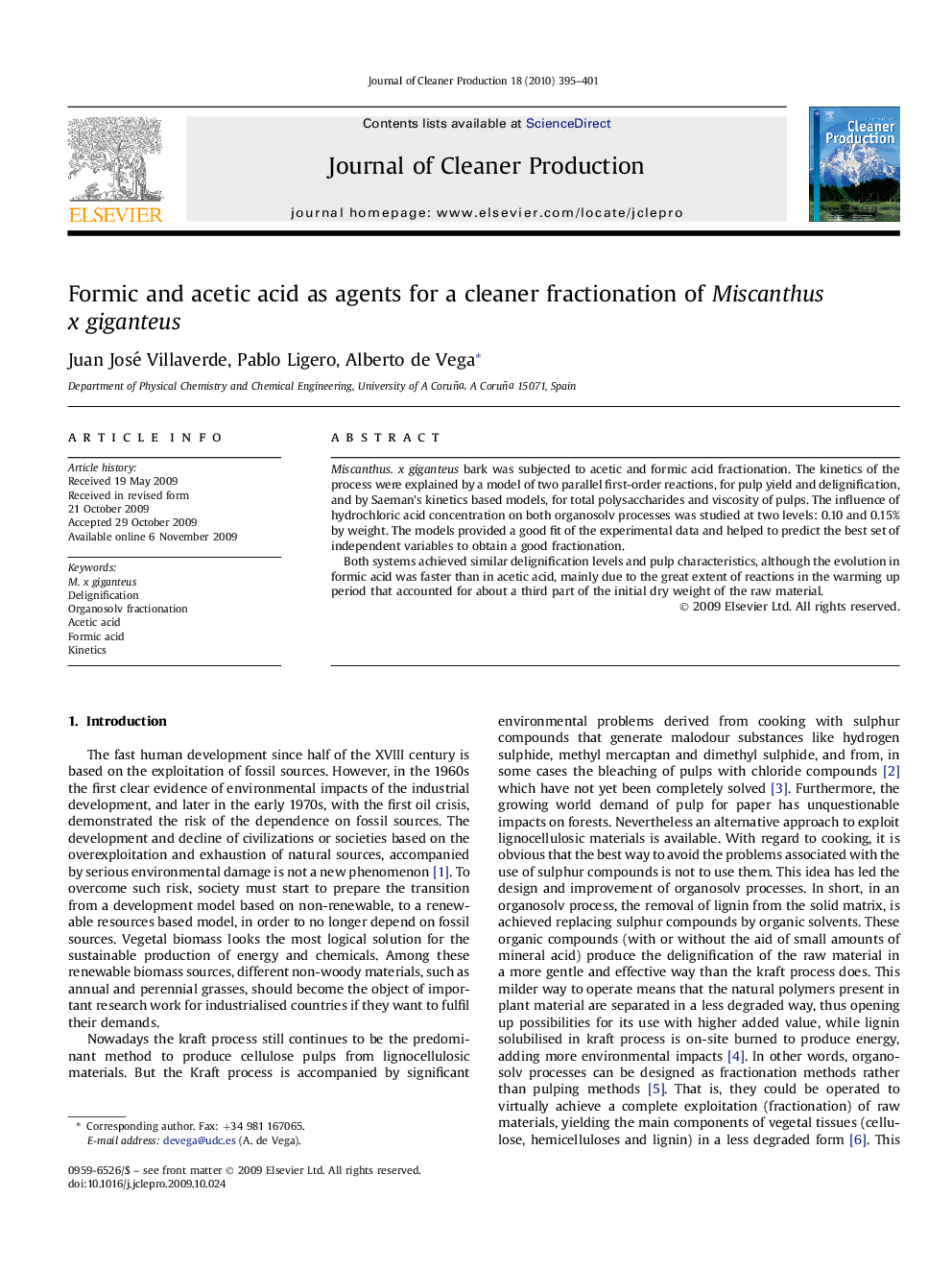| Article ID | Journal | Published Year | Pages | File Type |
|---|---|---|---|---|
| 1746584 | Journal of Cleaner Production | 2010 | 7 Pages |
Miscanthus. x giganteus bark was subjected to acetic and formic acid fractionation. The kinetics of the process were explained by a model of two parallel first-order reactions, for pulp yield and delignification, and by Saeman's kinetics based models, for total polysaccharides and viscosity of pulps. The influence of hydrochloric acid concentration on both organosolv processes was studied at two levels: 0.10 and 0.15% by weight. The models provided a good fit of the experimental data and helped to predict the best set of independent variables to obtain a good fractionation.Both systems achieved similar delignification levels and pulp characteristics, although the evolution in formic acid was faster than in acetic acid, mainly due to the great extent of reactions in the warming up period that accounted for about a third part of the initial dry weight of the raw material.
